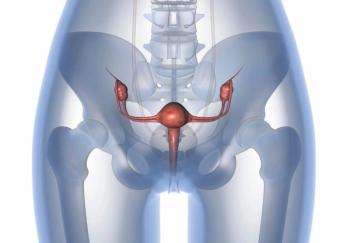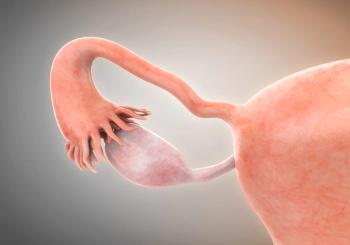
AACR: Promising Phase I Clinical Data With Pan-AKT Inhibitor in Solid Tumors
Different dosing schedules of the pan-AKT inhibitor AZD5363 revealed key details about maximum tolerable dosages, and biochemical efficacy was suggested by analyzing biomarkers, according to the results of a phase I study presented at the 2013 annual meeting of the American Association of Cancer Research.
Washington, DC-Different dosing schedules of the pan-AKT inhibitor AZD5363 revealed key details about maximum tolerable dosages, and biochemical efficacy was suggested by analyzing biomarkers, according to the results of a phase I study presented at the 2013 annual meeting of the American Association of Cancer Research in Washington, DC.
Chemical structure of AZD5363
The results were reported by Udai Banerji, MD, PhD, of the Institute of Cancer Research and the Royal Marsden NHS Foundation Trust in London.
AZD5363 is an inhibitor of AKT isoforms 1, 2, and 3, which are commonly dysregulated in many forms of cancer. The two phase I multicenter trials recruited 92 patients with a broad array of tumor types. Patients were treated twice daily with rapid dose escalation starting at 80 mg and working up to 600 mg. Once the maximally-tolerated dose was assessed, patients were randomized to either continuous administration or intermittent schedules of 4 days on/3 days off or 2 days on/5 days off for 4 weeks.
The dose escalation phase of the trial demonstrated clear intolerance for the 600 mg dosing regimen, and 400 mg was not tolerated chronically; 320 mg was settled upon as a maximum dose, but Dr. Banerji noted it was very close to a borderline between tolerable and intolerable, because Japanese patients experienced toxicity. The intermittent schedules were markedly more tolerated; the 4 days on/3 days off arm saw a maximum dose of 480 mg twice daily without any dose-limiting toxicity, and the 2 days on/5 days off patients were able to tolerate 600 mg twice daily. “The way we have to take the AKT inhibitor field forward is intermittent dosing,” said Dr. Banerji.
In addition to the safety results, Dr. Banerji was able to present some preliminary efficacy data. Pharmacokinetics revealed that the 480 mg dose in the 4 days on/3 days off schedule resulted in blood concentrations that were previously shown in preclinical studies to be effective. This concentration was maintained for 6 to 8 hours, and the short half-life-approximately 10 hours-was noted by Dr. Banerji, “[the short half-life] allows flexible dosing, and if you do run into toxicity, you can stop the drug, and the toxicities do go away quite quickly.” Phosphorylated PRAS40, a downstream target of AKT kinase activity, was assessed in hair follicles and in platelet-rich plasma. Phosphorylation was inhibited by AZD5363 in both cases.
Two case studies were reported using AZD5363. A 38-year-old Japanese woman with metastatic endometrioid ovarian cancer harboring an AKT mutation received the intermittent dose of 4 days on/3 days off, and a year later she had significant remission. The second patient was a 42-year-old Caucasian woman with PIK3CA-mutated metastatic cervical cancer resistant to chemotherapy. She had previously tolerated the continuous dose at 400 mg twice daily, so she remained on the continuous schedule. Her tumor showed a 34% reduction in size, classified as a partial response, for 6 months.
The most common treatment-related side effects of AZD5363 were shown to be rash and diarrhea. These were common in the continuous dosing schedule and were reduced in the intermittent schedules. Intermittently treated patients instead developed asymptomatic hyperglycemia, which was noted by Dr. Banerji to be less concerning and more manageable than other side effects.
Newsletter
Stay up to date on recent advances in the multidisciplinary approach to cancer.
















































































